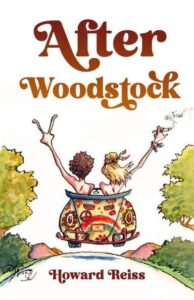Berwyn Farmers’ Market is back and bigger than ever! Culinary Harvest, with generous support from Eadeh Enterprises, proudly announces the return of the region’s most beloved new farmers’ market, kicking off Sundays from 9 am to noon at Bronze Plaza (511 Old Lancaster Road) — right next to Handel’s Ice Cream.
Now in its third season, this community staple is turning up the charm with expanded hours, 70+ curated vendors throughout the season, live music, food trucks, weekly kids’ activities, and rotating charity partners. Each week features a unique mix of 25–30 local farmers, food artisans, artists, and makers, offering everything from farm-fresh produce and pasture-raised meats to baked goods, handmade gifts, small-batch coffee, and grab-and-go bites.
If You Go
- Berwyn Farmers’ Market is your Sunday destination for all things local, fresh and festive. The market will be open weekly through Dec. 21, 2025, with brief breaks on July 6 and Nov. 30.
- No charge to visit, with shopping pay-as-you-go. Complimentary parking is available between Barre3 and Kramer Drive.
Berwyn Farmer’s Market Food Truck Schedule
5/18/2025
Bright Day Studio/Indian Run EEC – no charge kids’ art activity
JT Wilder BBQ – Food truck
5/25/2025
FLITE – Charity
Angie’s Vietnamese Cuisine – Food truck
6/1/2025
Daemion Counseling – Charity
Bop Truck – Food truck
6/8/2025
3rowback – Live music
Back to Earth Compost – Education
Bop Truck – Food truck
6/15/2025
Easttown Library & Friends – Education/Charity
Philly Hots – Food truck
6/22/2025
Main Line Meals on Wheels – Charity
Angie’s Vietnamese Cuisine – Food truck
6/29/2025
JT Wilder BBQ – Food truck
07/13/2025
Bright Day Studio- no charge kids’ art activity
Tucked In – Live Music band
Philly Hots – Food truck
7/20/2025
Barnstone Art for Kids – Charity
Angie’s Vietnamese Cuisine – Food truck
7/27/2025
Fighting Back SP – Charity
JT Wilder BBQ – Food truck
08/03/2025
Good Call – Live music
Easttown Library & Friends – Charity/Education
Bad Mother Shuckers – Food truck
8/10/2025
Donut NV – Food truck
8/17/2025
David Fiorenza – Live music
Bop Truck – Food truck
8/24/2025
T&E Care – Charity
JT Wilder BBQ – Food truck
8/31/2025
Women’s Resource Center – Charity
Bop Truck – Food truck
Post expires at 10:47am on Monday September 1st, 2025

 Experience an energizing workout designed to stimulate your brain. It helps to combat sluggishness, reduce brain fog, and support brain cell renewal. Through the Essentrics program, you’ll discover how specific techniques and exercises enhance brain function and foster new neuron growth, regardless of your age or fitness level.
Experience an energizing workout designed to stimulate your brain. It helps to combat sluggishness, reduce brain fog, and support brain cell renewal. Through the Essentrics program, you’ll discover how specific techniques and exercises enhance brain function and foster new neuron growth, regardless of your age or fitness level.